White surfaces have become a staple finish in kitchen interiors, as manufacturers continue to add these light decors to their portfolio of worktops
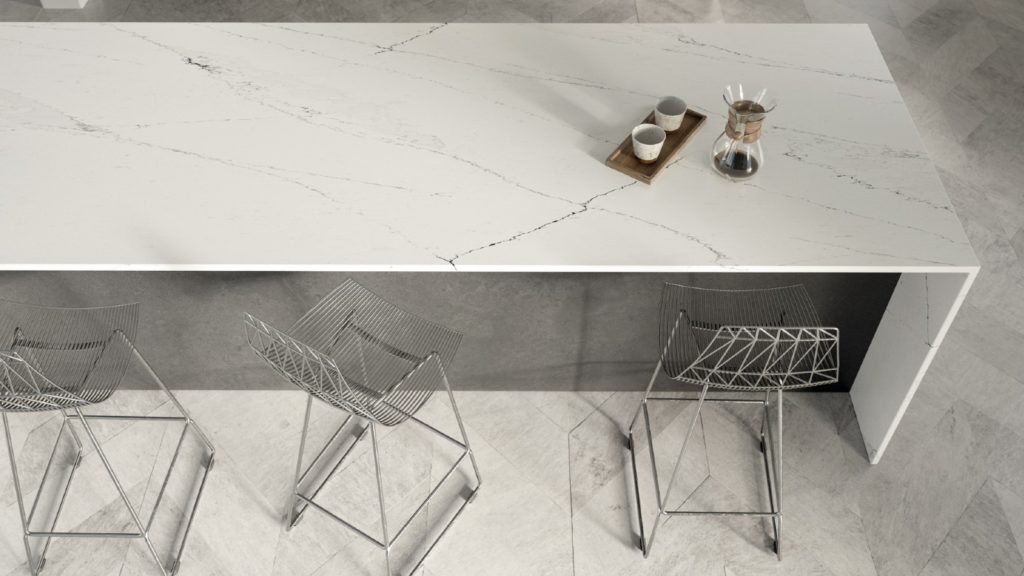
Ethereal Noctis is part of the Silestone Ethereal collection of white marble-effect patterns, manufactured by Cosentino amd made using HybriQ+ technology, which ensures each surface has a minimum of 20% recycled material.
White may conjure up one pure and specific shade, offering a classic and staple colour for kitchen surfacing.
However, according to colormeanings.com there are 122 shades of white with names, HEX, RGB and CMYK codes.
Sponsored Video
It’s unsurprising, then, manufacturers can continue to introduce a variety of white shades to their worktop portfolio.
Cosentino Group has recently introduced Moone to its Dekton palette, inspired by the warm glow of moonlight.
Whereas Caesarstone has sought inspiration from snowy landscapes for its 5121 Layalite décor, which it has recently added to its portfolio of quartz surface.
Pure finish
Commercial director of Brandt Design Julia Steadman explains why white is a perennial finish for kitchen worktops: “I think the freshness and vitality of white is appealing, plus it serves as an attractive contrast to so many colours and finishes, as the desire for personalisation continues.
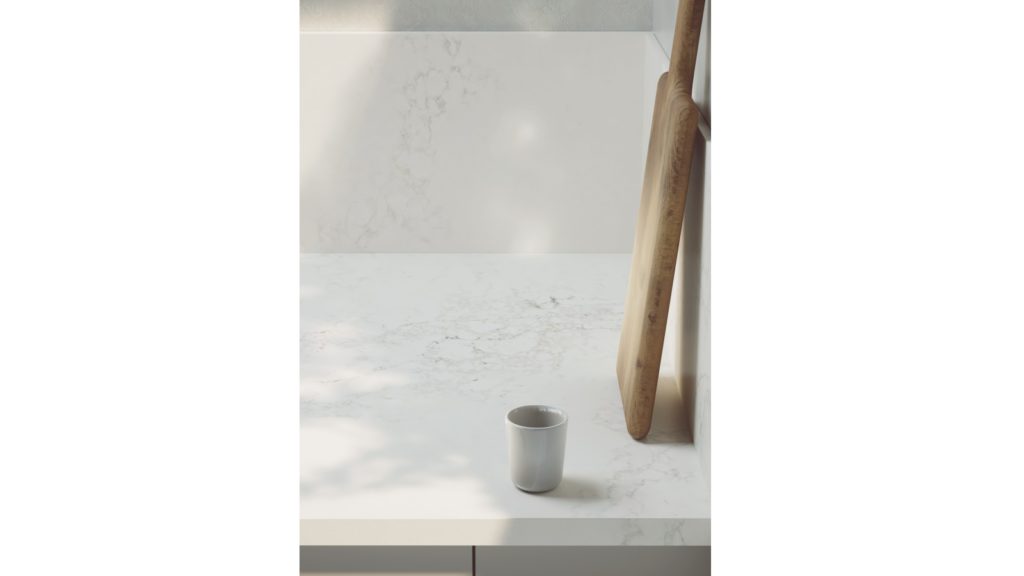
5121 Layalite from Caesarstone has been inspired by the juxtaposition of soft snowfall and the roughness of metamorphic rock, bringing the aesthetics of a snowy landscapes indoors
“As white has an innate purity and can be either warm or cool in colour temperature, I think it also brings an element of luxury to the kitchen living space by contributing to a feeling of spaciousness.”
Marketing manager at Cosentino UK Laura Davie agrees, commenting: “Crisp white worktops deliver a premium feel whilst letting the rest of the room do the talking; offering a blank canvas for personality to shine through via bold accessories, textiles and brassware.”
Dark times
But the popularity of white decors is difficult to measure, since white-based decors also incorporate the recent trend for marble-effect worktops.
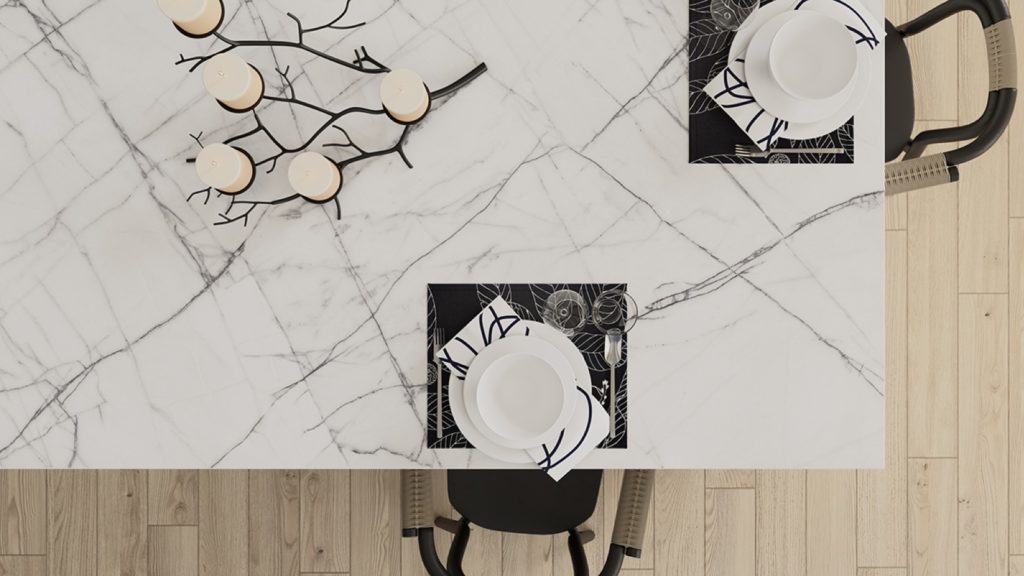
Gemini Quartz Ultra HD, from Gemini Kitchens, uses nanotechnology printing to offer stone patterns, which come in a choice of 10 colours.
In fact, Cosentino Group is set to launch four additional white-based marble effects into its Dekton surfacing collection.
Julia Steadman of Brandt Design explains: “Given the popularity of marble-effect finishes, it can be hard to say where white finishes end and light grey variants begin, so we have got a healthy proportion of both finishes, as well as new appetite for dramatic, darker surfaces.”
Does this suggest, then, that white worktop decor sales are or will be replaced by by darker surfaces
Creative director of Harvey Jones Melissa Klink says the move towards greater personalisation has seen the introduction of more colour into kitchen surfacing, as she comments: “Post lockdown, we have seen a shift in this trend, with strong interest to personalise the kitchen space. Several of our clients are doing this by injecting pattern and colour, especially on the worktops.”
Yet Melissa Klink doesn’t believe this will completely erase sales of white worktops, as she adds: “We will always design with white worktops. I don’t ever see that shifting.
“White worktops are timeless and bright, two elements that automatically bring satisfaction to an interior space.”
While Julia Steadman believes white will be combined with colour: “I imagine white will again be used creatively to balance bold colour choices and mixed materials in the kitchen living space, as we look towards 2023-2024.
Material matters
White decors are available across a raft of materials for kitchen worktops, from laminate, quartz and sintered stone through to solid surfacing and porcelain, enabling designers to meet all budgets.
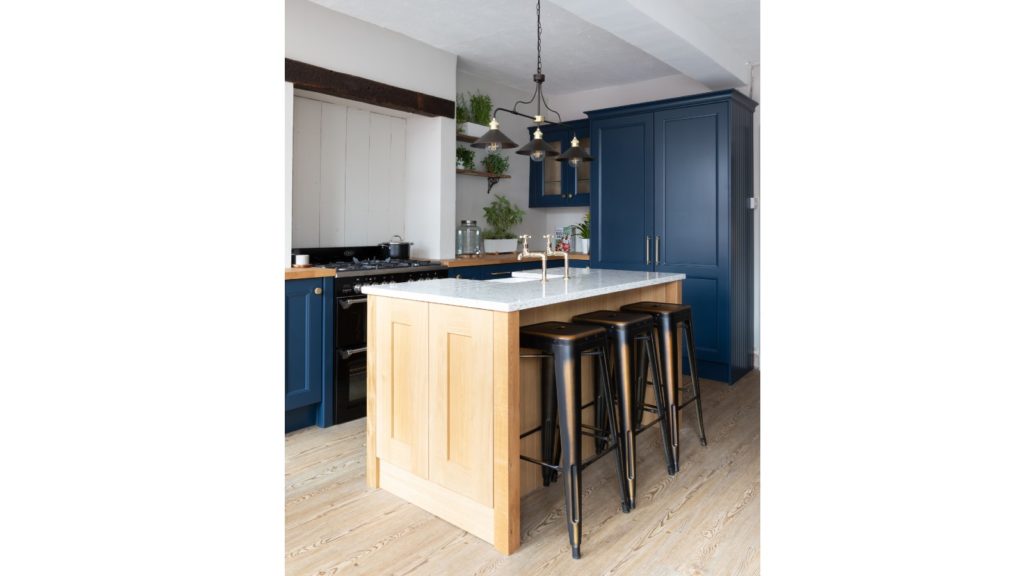
Part of the Renaissance Collection, CRL Quartz River White features a marble pattern of whites, greys and browns to create movement and depth
So is there greater focus on the material, rather than simply the colouration?
Melissa Klink suggests clients are swayed by the aesthetics on social media and it the designers’ role to educate clients about their worktop material choice: “Before clients would do a lot of their design inspiration alongside our process, but now clients are coming to us full of formulated ideas off social media outlets.
“So, our informative role about materials is much more critical to help clients finalise selections.”
Sustainability conversation
And, as part of this greater understanding of materials, sustainability is forming a larger part of the conversation when consumers are selecting kitchen worktops.
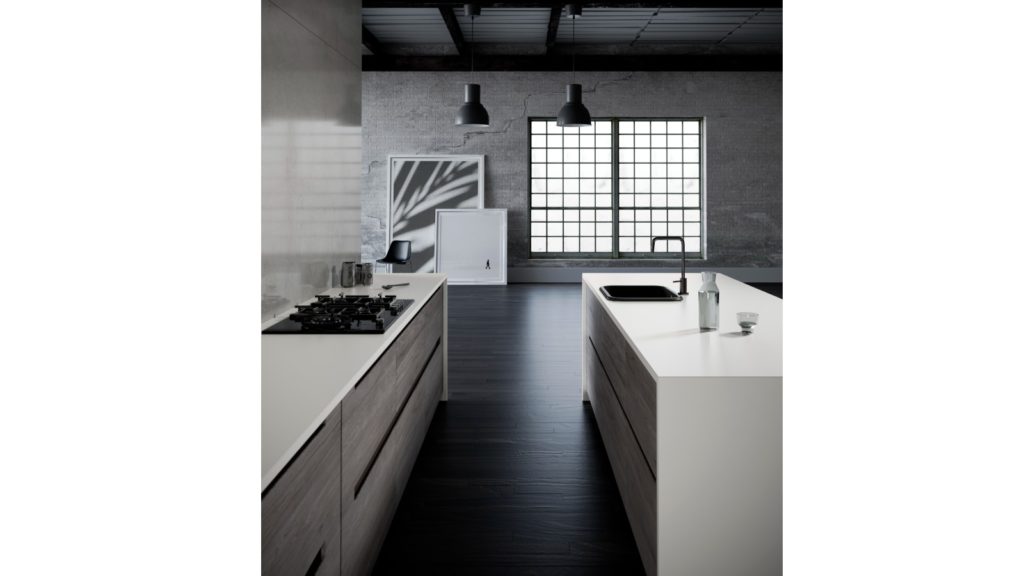
Moone has been added to the Solid Collection of the ultra-compact worktop brand, Dekton by Cosentino, and is inspired by the warm glow of moonlight
Laura Davie of Cosentino adds: “As the world continues to combat climate change, consumers are ultimately letting sustainability guide their purchase decisions and are more dedicated than ever to selecting the most eco-friendly products possible, including surfaces for the kitchen.
“From efficiently managing energy and water throughout the production process, to carbon neutrality and recycled product composition, homeowners are relying on the brands they use throughout their home to be demonstrating sustainable practices.”
Julia Steadman agrees that sustainability is spiking the interest of her customers, adding: “We are finding customers are well-versed in sustainability and are keen to learn about new development such as made-to-measure quartz surfaces which mimic the look and feel of marble.”
While the worktop market keeps moving with developments in material, as well as colour and patternation, industry experts believe white will continue to be an influence in kitchen surfaces.
So designers can be safe in the knowledge there’s still lots of noise around white worktops.



